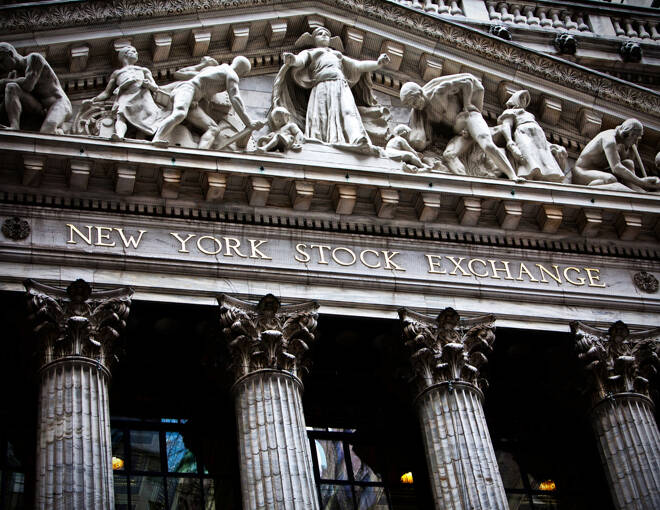Advertisement
Advertisement
Higher Bond Yields Keep the Pressure on Stocks
By:
Stock investors seem to remain extremely cautious.
Bulls want to believe that the worst of the recent downturn is over with some pointing to the fact that stocks didn’t sell off yesterday in spite of yields on 10-year Treasuries surging back above +3%.
Bond yields
At the same time, Wall Street insiders warn that it may be hard for stocks to mount any meaningful rallies if bond yields much over +3% are sustained. Theoretically, the guaranteed, risk-free returns of bonds could start to more seriously compete with stocks for investor money, keeping a lid on any big upswings.
Higher bond yields are also likely to keep the pressure on stocks of high-growth companies that dominate the tech sector. With many of these fast growing, profitless companies, their valuations are largely based on the future profits that today’s debt-fueled growth is supposed to be paving the way for.
Higher bond yields and interest rates make those profits less valuable in the long run, meaning those companies aren’t as valuable anymore. This is a key reason why bears believe there is more stock market “excess” left to shake out, especially with the Federal Reserve expected to aggressively tighten policy in the months ahead.
Fed officials have signaled rate hikes of 50-basis points for both the June and July policy meetings. There have also been hints that a 75-basis point hike could be justified in the second half of the year – perhaps September – if inflation shows no signs of easing. It’s hard to see where that relief might come from in the near-term especially with oil and other energy prices flying.
Saudi Arabia hiked prices on its crude oil for Asia, Europe, and the Mediterranean yesterday. What’s more, the hike for Asia was substantially higher than expected at +$2.10 versus +$1.50. Higher oil prices for Asia means higher manufacturing and transportation costs, which will likely end up being passed on to consumers in importing countries like the U.S.
Data to watch
The next read on U.S. inflation comes on Friday with the Consumer Price Index, which is also the final report before the Fed’s policy meeting next Tuesday and Wednesday (June 14-15). It’s hard to imagine a big bull rally between now and then considering the extreme degree of uncertainty surrounding energy prices and the impact on inflation. It’s also hard to imagine the central bankers have much insight to offer as far as when inflation might start to ease.
Part of the Fed’s job now is not only trying to keep a lid on prices but it also needs to manage consumer and investor expectations for inflation. If business and consumers anticipate substantially higher prices ahead, they could in theory pull back on investing/spending enough that it ends up creating a self-induced economic downturn. A slowdown would be welcomed by the Fed but it can be a fine line between slower growth and an outright recession. This is a “thread the needle” part of the equation that investors are not entirely confident that the Fed can successfully navigate.
Today, economic data is light with just the Trade Balance and Consumer Credit on the calendar. Earnings highlights include Advantest, Casey’s General Stores, and J.M. Smucker.
About the Author
Inna Rosputniacontributor
Inna Rosputnia has been involved in the markets since 2009 and is the founder of https://managed-accounts-ir.com/
Advertisement
